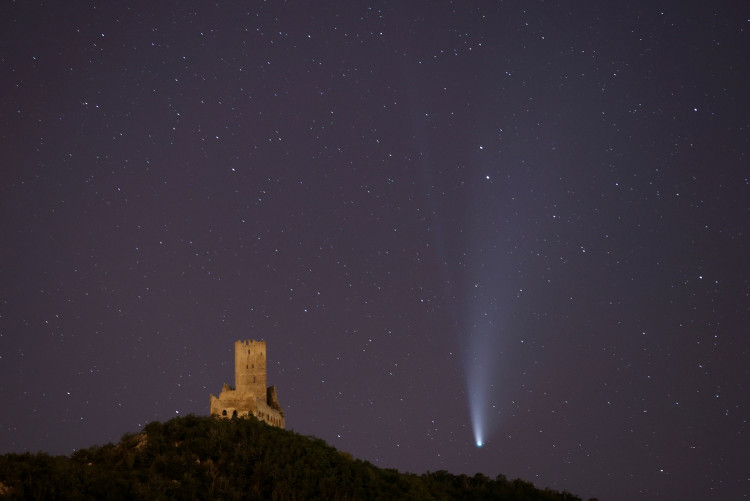Comet C/2022 E3 (ZTF) will attain its highest magnitude as it approaches perigee on February 1 and is currently moving through the northern skies.
The stunning green comet is getting closer to perigee, which makes it easier to see in the night sky. The comet has been brightening since November and has been captivating astrophotographers with its dazzling green tail. It was first detected in March 2022 by astronomers Frank Masci and Bryce Bolin using the Zwicky Transient Facility (ZTF) at the Palomar Observatory in California.
To see the comet, look to the north shortly after sunset for a faint greenish glow. The comet may be visible to the naked eye under the correct dark sky circumstances, but binoculars will make the work much easier.
Comet C/2022 E3 (ZTF) has already put on quite a show for astrophotographers, resulting in a plethora of spectacular images of the stunningly green comet. Strong solar winds caused a portion of the comet's tail to break off in early January, causing what astronomers term a disconnection event.
Comet C/2022 E3 (ZTF) is seen near the constellation Draco as of Monday (Jan. 23).
The comet will be seen just next to Ursa Minor, also known as the "Little Bear" or "Little Dipper." on Thursday, Jan. 26.
The comet will move eastward by Jan. 30 in the direction of Camelopardalis, where it will be visible on Feb. 1 when it reaches perigee.
The comet will appear near to Mars on Feb. 10 after moving slightly to the east, which may make it easier to see.
More recently, comet C/2022 E3 (ZTF) formed what is known as an "anti-tail," a phenomenon that makes a comet appear to have a second, forward-facing tail. This was reported by SpaceWeather.com. An anti-tail is actually an optical phantom created by a disk of bigger dust particles along the comet's orbit. This dusty disk, which resembles a reversed anti-tail when viewed side on, can be seen as Earth passes across the comet's orbital plane.
If the weather isn't cooperating for late-night or early-morning skywatching in your location, don't worry: the Virtual Telescope Project will be presenting a free broadcast of comet C/2022 E3 (ZTF). The stream will commence on February 1 at 11:00 p.m. EST (0400 GMT), and can be viewed on the project's website or YouTube channel.




